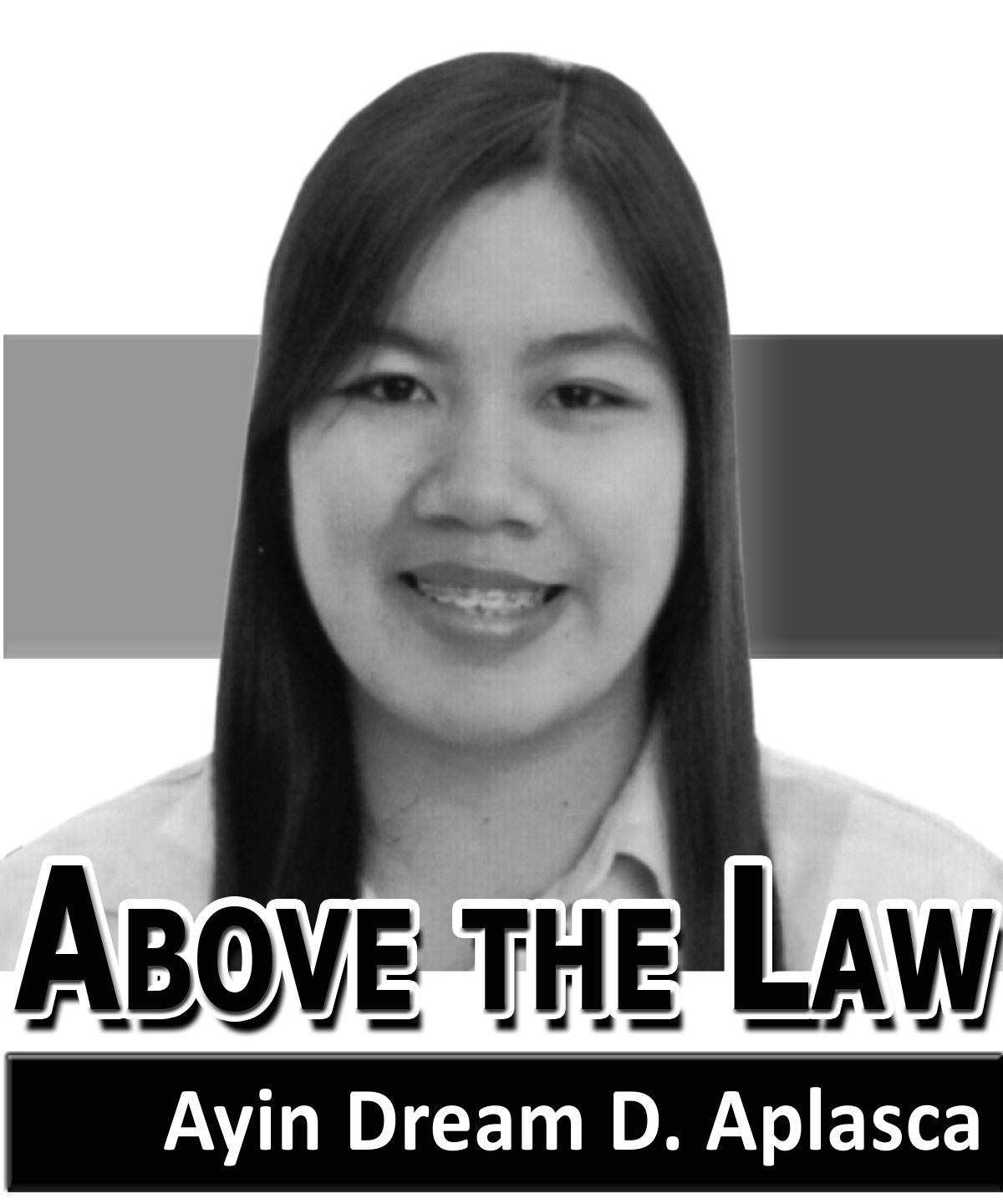
[av_one_full first min_height=” vertical_alignment=” space=” custom_margin=” margin=’0px’ padding=’0px’ border=” border_color=” radius=’0px’ background_color=” src=” background_position=’top left’ background_repeat=’no-repeat’ animation=”]
[av_heading heading=’ ABOVE THE LAW ‘ tag=’h3′ style=’blockquote modern-quote’ size=” subheading_active=’subheading_below’ subheading_size=’15’ padding=’10’ color=” custom_font=”]
BY AYIN DREAM D. APLASCA
[/av_heading]
[av_textblock size=” font_color=” color=”]
Hopeless case
THE WAR on drugs of the President continues. The number of drug users and pushers ending up either dead or behind bars is increasing each day. Do all the killings justify the drug operations? It depends.
Case in point is a Grade 11 kid that, according to the police, was a “drug runner.” I refused to name the kid though I know that some of you already know him.
He had just closed the shop for the night when the police in plain clothes shot him dead. It was a legitimate operation. Based on the police report, the kid ran when he saw the officers approaching. He pulled out a gun and opened fire at the cops who hit back.
But according to witnesses, the kid was unarmed. He was beaten badly. The security footage showed he was dragged away by the police to a dark place. “Take this gun, fire it and run,” a witness overheard the police.
And at the age of 17, his life ended. How serious is the drug problem to end like this?
Assuming that the 17-year old kid was a “drug runner,” why not give him a chance to recover, redeem himself and be a more useful citizen of this country? I know the President considers drug addicts or users beyond redemption, maybe even those who are just drug pushers and drug runners.
But isn’t his administration building more treatment and rehabilitation centers to accommodate thousands drug surrenders needing residential services? Why not offer this to the 17-year-old kid where he could still correct his life instead of ending it because he was a “drug runner”?
I am writing this article not as a sort of reaction paper as what most of our teachers in school require. Rather, I am writing this because I want to introduce and reiterate that not all means justify the end, and that there is a way this kind of scenario can be avoided.
As a problem, we don’t only look at this in a biological or chemical perspective. It also has environmental, existential and psychological perspectives. A holistic approach is needed and that is what I mentioned earlier regarding treatment and rehabilitation.
The Dangerous Drugs Board (DDB) released guidelines regarding drug treatment and rehabilitation, whether it is voluntary or not. Here is the summary:
First, a person, the drug user himself or his family, should obtain a referral form for a Drug Dependency Examination (DDE) to determine the level of a drug user.
Second, the drug user has to undergo the DDE conducted by a physician accredited by the Department of Health (DOH). Here, the DDE determines the person’s level of drug use.
Third, if found to be a drug abuser or drug dependent (4th and 5th levels), a certification, together with other requirements, should be submitted to the Legal Affairs Division of DDB. If the drug dependent is a minor and has a pending case in court, he or she, together with his or her guardian, must secure a Certification of Suspended Sentence from the RTC where the case is filed. Those found to fall under the 1st, 2nd, and 3rd levels can avail themselves of out-patient services such as counselling.
Fourth, the drug dependent or a family member must fill out an application form and have it notarized as requirement for the petition for confinement. The form will then be filed with an RTC in the area where the drug dependent resides. In case of compulsory confinement, the family member of a drug dependent must execute an affidavit. DDB will prepare a petition for confinement and file the same with the RTC.
Lastly, the drug dependent or a family member can decide where to get drug treatment and rehabilitation. DDB may recommend government-owned RTCs for individuals who cannot afford the services of private centers.
The President’s war on drugs is on spotlight. However, his approach has put him squarely in contrast with what others believed should be the case. I hope the treatment and rehabilitation program will fill in the missing element in the government’s war on drugs.
The nanlaban (“they fought back”) explanation will not always justify the operations. And the police have the burden of proof to prove in the court of law the self-defense argument.
The drug treatment and rehabilitation may not totally end the drug problem. But I believe it is not a hopeless case that will always end up in a bloody war. Condolences to the parents and family of the 17-year-old kid.
(Atty. Ayin Dream D. Aplasca practices her profession in Iloilo City. She may be reached thru ayindream.aplasca@gmail.com/PN)
[/av_textblock]
[/av_one_full]



